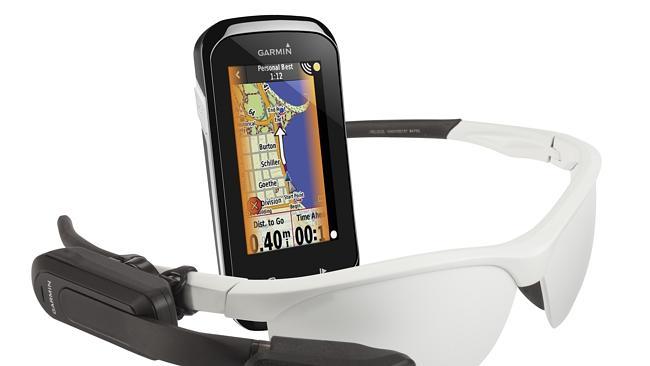Review: Varia Vision and Garmin Edge
A head-up display for cyclists seems like a good idea but is really more trouble than its worth.

As an enthusiastic amateur cyclist I’ve used lots of gadgets to enhance the experience, starting with a Polar heart rate monitor and evolving to Garmin devices.
But I’d previously never tried using a heads-up display or a gadget that offers information directly to my eye as I cycle along.
Varia Vision does exactly that. It’s a small rectangular LED screen that attaches to the arm of your glasses. For me, that’s typically a pair of sunglasses as you ride along. To enable it, you mount a Garmin Edge 1000 or Edge 520 cycling computer on the handlebars and pair it with the head unit.
Typically I ride 200km- 300km per week, including occasional 250km one-day gran fondo rides and local races.
For a device to offer useful metrics while cycling, it needs to display the major data fields: distance, heartrate, power and calories. All of this is provided by the Edge computer and relayed to the Varia display via Bluetooth.
Having read lots about Google Glass, I was at first apprehensive about how useful Varia Vision would be and whether it would enhance my riding experience. But I was keen to try it out.
To install the system is straightforward. You attach supports to the preferred side of your glasses, which for me was the left-hand side. You then attach the Varia Vision to that support. I wear Oakley Radar cycling sunglasses.
Before I began riding, I initially thought the Varia unit would impair vision. It would be similar to having a blind spot when driving.
Once riding it did impair vision, but to a smaller degree than I expected. To see the metrics, I had to glance to the left-hand side. For me this was a little distracting, especially riding in city traffic.
While seeing these metrics is useful, in a city environment or riding in a bunch you need to be alert to anything moving, whether it is in front of you or in the corner of your eye, so in these environments the Varia Vision can be distracting. But on quiet roads or when riding individually, I could use Varia Vision comfortably when climbing a hill and trying to maintain power and heartrate consistency as I went.
Varia Vision has two screen modes. You can choose a white or black, making it more usable at night. But I didn’t feel comfortable about wearing it at night when you need all the vision you can muster.
Overall it’s a trade-off. A Varia Vision head unit stops you having to look down at the handlebars to read riding metrics. But the unit itself does impair your peripheral vision, which for me is even more important. For me, eyes and ears are the most important thing on the road.
But I don’t believe everyone will have the same objections as me. In the end, Varia Vision is more suited for a commuter rider rather than a competitive rider where you need every bit of vision.
I do see value in Varia Vision when you pair it with a map to get around a town or city or when cycling overseas. Or you might be training and aiming for a sustained power output effort and not wanting to constantly look at the cycling computer.
Call me a little old school, but I think for most people Varia Vision would be an unnecessary distraction to their cycling experience.



To join the conversation, please log in. Don't have an account? Register
Join the conversation, you are commenting as Logout